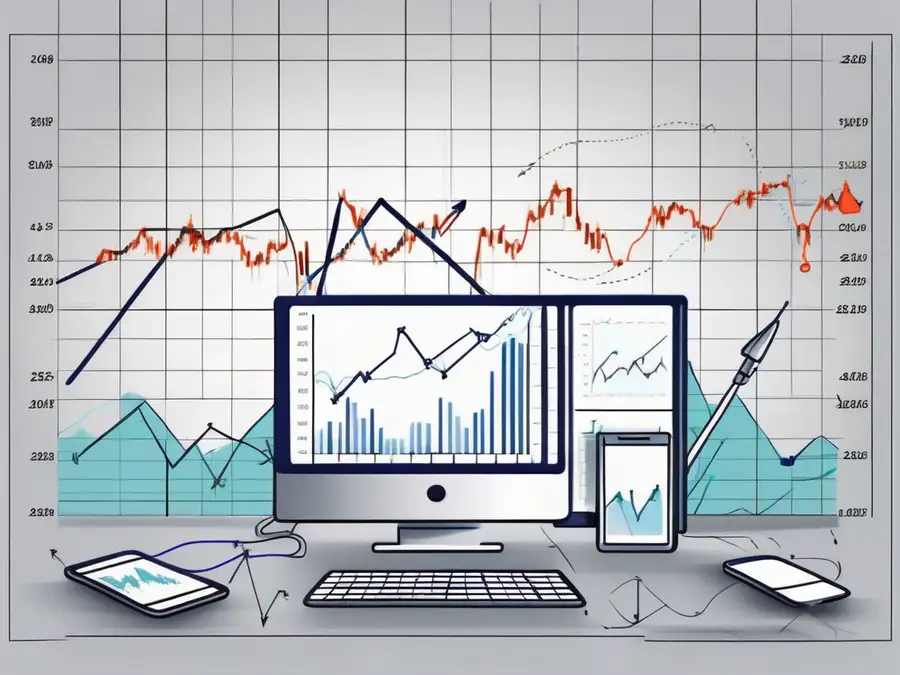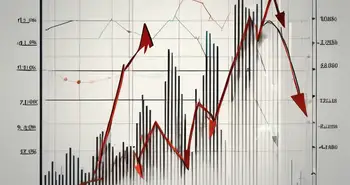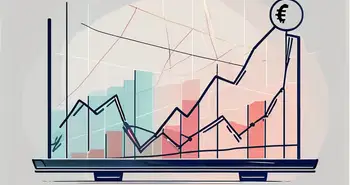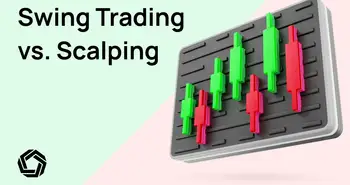The Best Indicators for Swing Trading: A Comprehensive Guide

As an experienced trader, I can confidently say that swing trading is one of the most effective strategies for profiting from short-term price fluctuations in the financial market. In this comprehensive guide, I will shed light on the best indicators that can help you make informed decisions while swing trading. By using these indicators wisely, you can increase your chances of success and maximize your profits.
Understanding Swing Trading
Before diving into the world of indicators, let's first understand the basics of swing trading. As its name suggests, swing trading involves capturing short-term price swings within an overall trend. Unlike day trading, which focuses on intraday price movements, swing trading aims to capture larger price moves that last from a few days to several weeks.
Swing trading is ideal for individuals with busy schedules who cannot monitor the market all day long. With this approach, you can take advantage of the market's natural ebb and flow without being tied to your screen.
But what exactly does swing trading entail? Let's explore the intricacies of this popular trading strategy.
The Basics of Swing Trading
Swing trading relies on technical analysis rather than fundamental analysis. By studying historical price patterns, support and resistance levels, and market trends, swing traders can identify potential entry and exit points.
One popular method used in swing trading is to follow the “higher highs and higher lows” concept. This means buying when an asset's price makes higher swing highs and higher swing lows, and selling when the opposite occurs.
However, swing trading is not just about blindly following patterns. It requires a deep understanding of market dynamics and the ability to interpret complex data. Successful swing traders combine technical analysis with risk management strategies to maximize their profits and minimize potential losses.
Moreover, swing trading is not limited to a specific market or asset class. It can be applied to stocks, forex, commodities, and even cryptocurrencies. This versatility allows swing traders to explore various opportunities and diversify their portfolios.
The Importance of Swing Trading in the Financial Market
Swing trading plays a crucial role in the financial market ecosystem. It provides much-needed liquidity and acts as a stabilizing force. While long-term investors focus on the overall trend, swing traders ensure that smaller price fluctuations are accounted for, making the market more efficient.
As a swing trader, you contribute to the market's overall health by providing liquidity and mitigating extreme price movements. Moreover, swing trading offers an excellent opportunity to profit from short-term price fluctuations, enabling you to stay ahead in today's fast-paced market.
Furthermore, swing trading is not just beneficial for individual traders. It also benefits institutional investors and market makers who rely on the liquidity provided by swing traders to execute their larger trades smoothly.
In conclusion, swing trading is a dynamic and versatile trading strategy that allows individuals to take advantage of short-term price swings within an overall trend. By combining technical analysis, risk management, and market knowledge, swing traders can navigate the financial markets with confidence and potentially generate consistent profits.
The Role of Indicators in Swing Trading
Indicators are powerful tools that can help you navigate the complex world of swing trading. They provide objective insights into price movements, confirm or challenge your trading ideas, and act as a guide when making decisions.
Swing trading is a popular trading strategy that aims to capture short-term price movements within a larger trend. Traders who employ this strategy often rely on indicators to identify potential entry and exit points, as well as to gauge the strength of a trend.
Defining Trading Indicators
Trading indicators are mathematical calculations based on historical price and volume data. They provide visual representations of various market factors, such as momentum, trend strength, overbought or oversold conditions, and more. By analyzing these indicators, swing traders can gain valuable insights into market dynamics.
There are numerous types of indicators available to swing traders, each with its own unique calculation method and interpretation. Some common examples include moving averages, relative strength index (RSI), stochastic oscillator, and Bollinger Bands.
It's important to note that indicators are not foolproof. They should be used as a supplement to your overall analysis and not relied upon blindly. Understanding their strengths, limitations, and their interaction with other indicators is crucial for successful swing trading.
For example, the RSI is a popular indicator used to identify overbought and oversold conditions. It measures the speed and change of price movements and provides a numerical value between 0 and 100. A reading above 70 is typically considered overbought, indicating a potential reversal or correction, while a reading below 30 is considered oversold, suggesting a possible upward price movement.
How Indicators Influence Swing Trading Decisions
Indicators act as a compass, helping traders navigate the complexities of the market. They provide valuable information about potential entry and exit points, trend reversals, and overextended price moves.
For instance, moving averages, one of the most popular swing trading indicators, can help identify trends and provide support and resistance levels. By combining different types of moving averages, such as the 50-day and 200-day moving averages, you can gain insights into short-term and long-term trends simultaneously.
Another example is the Bollinger Bands, which consist of a middle band (usually a simple moving average) and two outer bands that represent the standard deviation of price movements. When the price moves close to the upper band, it may indicate an overbought condition, while a move towards the lower band may suggest an oversold condition. Traders often look for price reversals or breakouts when the price reaches these bands.
It's important to remember that indicators should not be used in isolation. They are most effective when combined with other technical analysis tools, such as chart patterns, support and resistance levels, and volume analysis. By integrating multiple indicators and analyzing their convergence or divergence, swing traders can increase their probability of making successful trading decisions.
In conclusion, indicators play a crucial role in swing trading by providing objective insights into market dynamics. They help traders identify potential entry and exit points, determine trend strength, and spot overbought or oversold conditions. However, it's important to use indicators in conjunction with other analysis techniques and to understand their limitations. With proper knowledge and application, indicators can greatly enhance your swing trading strategy.
Top Indicators for Swing Trading
Now that we understand the role of indicators in swing trading, let's explore some of the best indicators that can help improve your trading strategy.
Moving Averages
Moving averages smooth out price movements and reveal underlying trends. They provide a visual representation of average price over a specific time period. By analyzing the interaction between multiple moving averages, traders can identify potential entry and exit points.
Relative Strength Index (RSI)
The RSI is a momentum oscillator that measures the speed and change of price movements. It helps identify overbought and oversold conditions, indicating potential trend reversals. By using the RSI, you can make more informed decisions and avoid trading against the prevailing trend.
Stochastic Oscillator
The stochastic oscillator is another popular swing trading indicator. It compares an asset's closing price to its price range over a specific time period. The oscillator provides insights into overbought and oversold conditions, allowing traders to anticipate potential trend reversals.
Choosing the Right Indicators for Your Trading Style
Not all indicators are created equal. Each trader has a unique trading style, and it's crucial to select indicators that align with your preferences and objectives. Here are some factors to consider when selecting indicators:
Factors to Consider When Selecting Indicators
1. Understand the indicator's purpose and how it aligns with your trading strategy.
2. Consider the indicator's reliability and historical performance.
3. Avoid overwhelming yourself with too many indicators. Focus on a few reliable ones that complement each other.
4. Backtest and validate indicators before implementing them in a live trading environment.
Remember, it's not about using every indicator available but using the right indicators effectively to enhance your trading strategy.
Balancing Risk and Reward with Indicators
While indicators can provide valuable insights, it's important to strike a balance between risk and reward. Over-reliance on indicators can lead to analysis paralysis and missed opportunities. Trust your analysis and use indicators as a guide rather than a definitive signal.
Now, let me share a personal story to illustrate the importance of finding the right balance. Early in my trading journey, I became obsessed with using every indicator available. However, I quickly realized that more doesn't necessarily mean better. It was when I simplified my approach and focused on a few reliable indicators that I truly started to see consistent profits.
Combining Indicators for Effective Swing Trading
In swing trading, one indicator alone may not provide a complete picture. That's why combining multiple indicators can enhance your decision-making process and increase your trading edge.
The Concept of Indicator Confluence
Indicator confluence refers to the alignment of multiple indicators pointing towards the same trade direction. When different indicators, such as moving averages and the RSI, confirm each other's signals, it adds weight to the trading decision.
Strategies for Combining Multiple Indicators
To effectively combine indicators, consider the following strategies:
- Identify indicators that provide complementary information: Look for indicators that analyze different aspects of the market to avoid redundancy.
- Use indicators of different timeframes: Combine indicators that analyze short-term and long-term trends to get a comprehensive view of the market.
By combining indicators smartly, you can reduce false signals and increase your ability to spot high-probability trades.
FAQ
1. What is swing trading?
Swing trading is a trading strategy that aims to capture short-term price fluctuations within an overall trend. It involves buying when an asset's price makes higher swing highs and higher swing lows, and selling when the opposite occurs.
2. What are trading indicators?
Trading indicators are mathematical calculations based on historical price and volume data. They provide visual representations of various market factors, such as momentum, trend strength, and overbought or oversold conditions.
3. What are the top indicators for swing trading?
Some of the top indicators for swing trading include moving averages, the Relative Strength Index (RSI), and the Stochastic Oscillator. These indicators can help identify trends, overbought or oversold conditions, and potential trend reversals.
4. How do I choose the right indicators for my trading style?
To choose the right indicators for your trading style, consider factors such as the indicator's purpose, reliability, and compatibility with your trading strategy. Avoid overwhelming yourself with too many indicators and backtest them before implementing them in live trading.
5. How can I effectively combine multiple indicators?
To effectively combine multiple indicators, identify indicators that provide complementary information and analyze different aspects of the market. Additionally, consider using indicators of different timeframes to get a comprehensive view of the market.
Swing trading is a skill that takes time and practice to master. By understanding the best indicators for swing trading and incorporating them into your trading strategy, you can increase your chances of success and achieve your financial goals. Remember, finding the right balance between indicators, risk management, and your own intuition is key to becoming a successful swing trader.
Ready to elevate your swing trading strategy with the best indicators? Join Morpher, the revolutionary trading platform that leverages blockchain technology for zero fees, infinite liquidity, and a unique trading experience. Whether you're interested in stocks, cryptocurrencies, forex, or even niche markets, Morpher offers fractional investing, short selling without interest fees, and up to 10x leverage to enhance your trading potential. Sign up now at Morpher.com and receive your free sign-up bonus to start trading on a platform that's as innovative as your trading strategy.

Disclaimer: All investments involve risk, and the past performance of a security, industry, sector, market, financial product, trading strategy, or individual’s trading does not guarantee future results or returns. Investors are fully responsible for any investment decisions they make. Such decisions should be based solely on an evaluation of their financial circumstances, investment objectives, risk tolerance, and liquidity needs. This post does not constitute investment advice.

Painless trading for everyone
Hundreds of markets all in one place - Apple, Bitcoin, Gold, Watches, NFTs, Sneakers and so much more.

Painless trading for everyone
Hundreds of markets all in one place - Apple, Bitcoin, Gold, Watches, NFTs, Sneakers and so much more.









